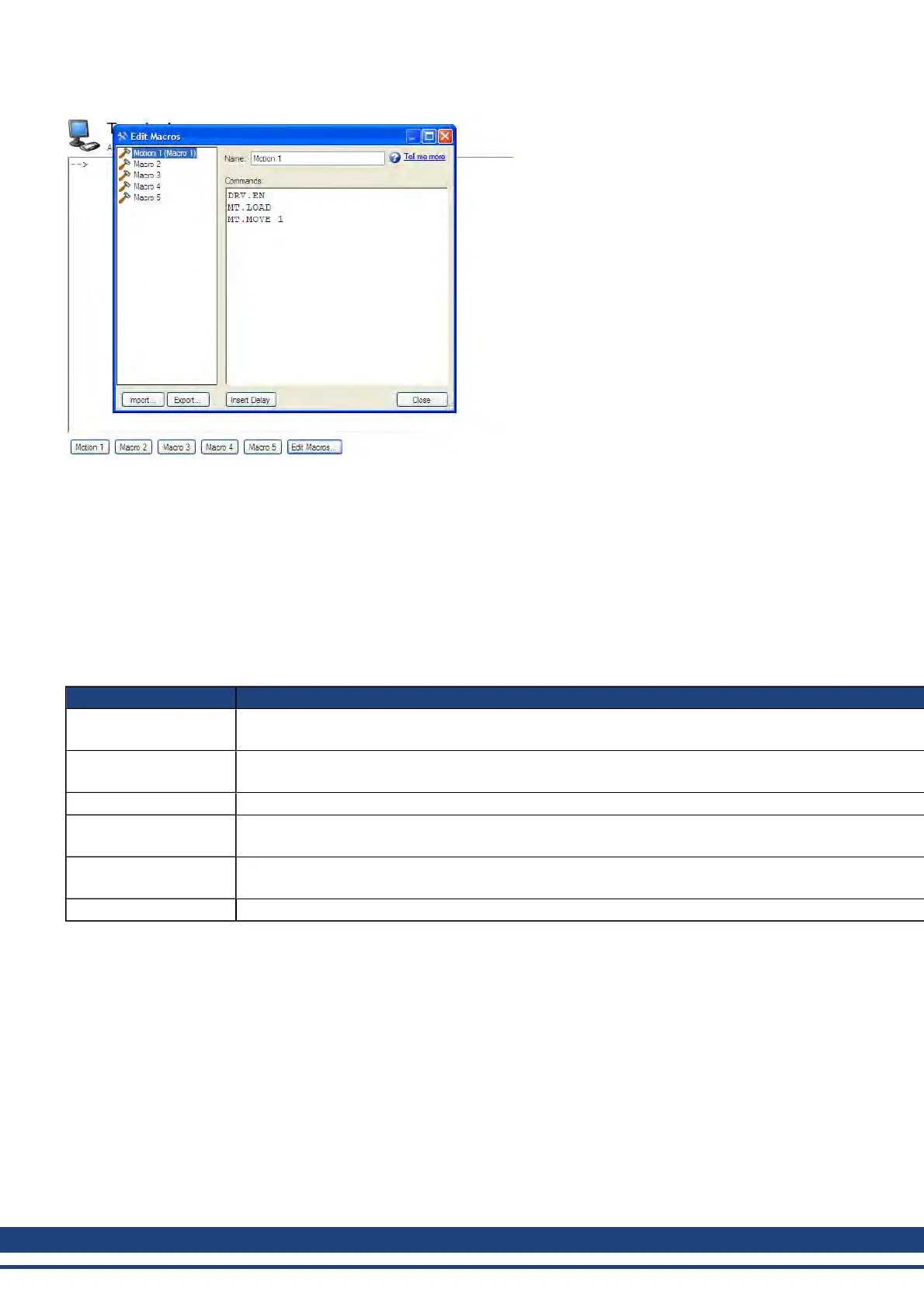AKD User Guide | 16 Using Parameters and the Terminal Screen
3. Select Save to save your macro.
16.1.3.2 Macro Editor
The macro editor allows you to create and modify up to five macros.WorkBench automatically saves the macros
that you create. If you exit WorkBench and then start WorkBench again, the macros you defined will still be avail-
able.
To create or edit a macro from the editor, open the Terminal screen and click on Edit Macros (located at the bot-
tom of the screen). Select the macro you wish to edit from the tree on the left, then use the features described
below to build the macro. You can add comments in the macro after the ";" symbol.
Button or Dialog Box Description
Name
Allows you to give each macro a unique name. This name will be shown on the button in the terminal
view.
Commands
Displays the commands that are sent to the drive when you use this macro. The response from the
drive is displayed in the terminal.
Import Overwrites the selected macro with the contents of a macro file exported from another computer.
Export
Sends the selected macro to a text file to that you can import into WorkBench running on another com-
puter.
Add Delay
Inserts a step into the macro that causes a delay for a specified number of milliseconds before con-
tinuing. A line that starts with #delay 5000 will pause the execution of the macro for 5000 milliseconds.
Close Closes this window and returns to the terminal view.
194 Kollmorgen | December 2010
